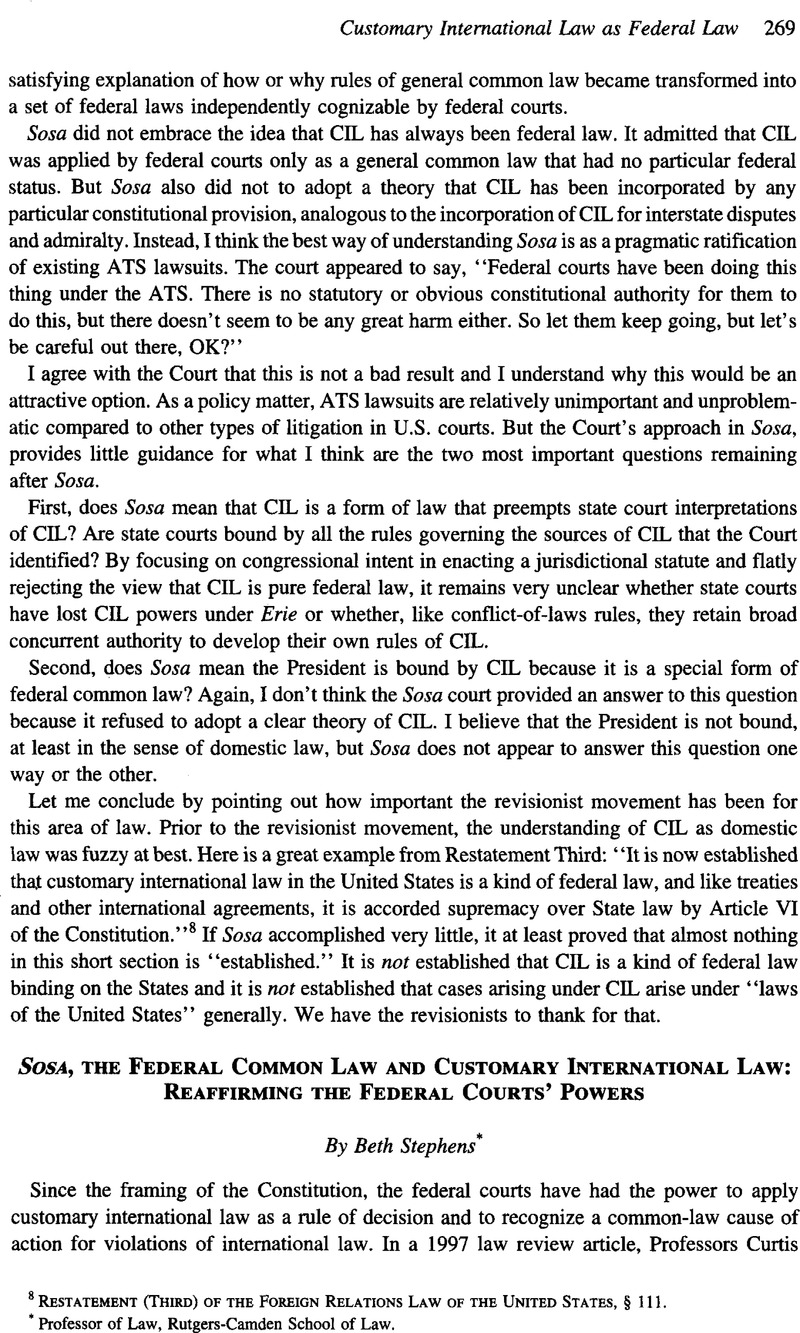No CrossRef data available.
Published online by Cambridge University Press: 28 February 2017

1 Bradley, Curtis A. & Goldsmith, Jack L. Customary International Law as Federal Common Law: A Critique of the Modern Position, 110 Harv. L. Rev. 815 (1997)CrossRefGoogle Scholar.
2 Dodge, William S. Customary International Law and the Question of Legitimacy, 120 Harv. L. Rev. 19 (2007)Google Scholar.
3 Sosa v. Alvarez-Machain, 542 U.S. 692 (2004).
4 Bradley, Curtis A., Goldsmith, Jack L. & Moore, Sosa, David H., Customary International Law, and the Continuing Relevance of Erie, 120 Harv. L. Rev. 869 (2007)Google Scholar.
5 See , e.g., id. at 873 (describing the “modern position” as holding “that CIL is incorporated wholesale into the U.S. legal system as federal common law.”).
6 304 U.S. 64 (1938).
7 See Stephens, Beth, The Law of Our Land: Customary International Law as Federal Law After Erie, 66 Fordham L. Rev. 393 (1997)Google Scholar.
8 28 U.S.C. § 1350.
9 Sosa, 542 U.S. at 730.
10 Id. at 724-25.
11 Id. at 730.
12 See, e.g., Bradley et al., at 873 (“The Court in Sosa held that the Ats authorized federal courts to recognize federal common law causes of action for a narrow class of CIL violations.”).
13 Justice Scalia complains bitterly that the majority permits judges “to create rights where Congress has not authorized them to do so ... .” Sosa, 542 U.S. at 747 (Scalia, J., concurring in part).